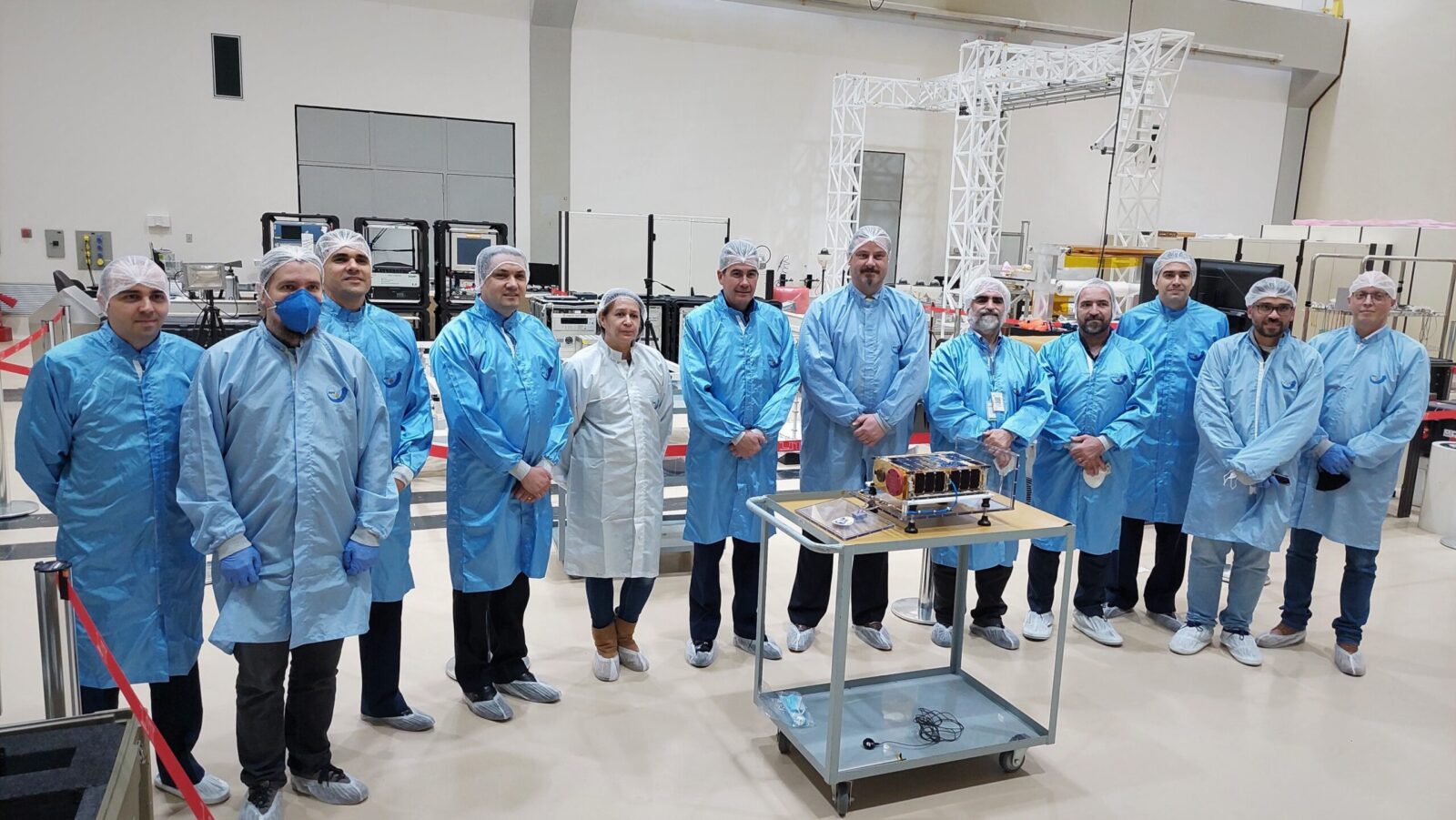The SPORT was conceived with the mission of monitoring the ionosphere (upper layer of the atmosphere), collecting data to study the effects of solar storms
Air Force Agency, ITA
The SPORT (Scintilation Prediction Observations Research Task) satellite, developed by the Instituto Tecnológico de Aeronáutica (ITA), NASA, the National Institute for Space Research (INPE) and American universities, was approved by NASA and the Brazilian Space Agency (AEB) in the pre-shipment review. The procedure was carried out on July 1st at INPE’s Integration Laboratory (LIT).
This step was necessary for the satellite to be released and sent to Houston (Texas) on July 4th, where it will await departure to Walloups Base (Virginia) and the launching to the International Space Station (ISS). From the ISS, the satellite will be launched to its observation position in space.
The satellite, developed by the Brazilian Air Force Military Organization (FAB), is a CubeSat 6U for scientific research in the ionosphere. This means that these are miniaturized satellites (nano-satellites) formed by cube units with 10 cm sides, each unit being worth 1U (Rack Unit, equivalent to 1.75 inch or 44.45 mm).
Some of these nano-satellites, such as SPORT, are on the cutting edge of knowledge, being able to perform certain functions that large satellites do, but at a much lower cost, which makes them very attractive for application in space research.
The Director-General of the Department of Aerospace Science and Technology (DCTA), Air Lieutenant Brigadier Maurício Augusto Silveira de Medeiros, and the Rector of the ITA, Professor Doctor Anderson Ribeiro Correia, were present at the LIT to observe the preparation for shipment of the Brazilian nanosatellite. Accompanied by the Project Manager, Professor Luís Loures, they were received by the INPE Director, Clezio Marcos de Nardin and the General Coordinator of Engineering, Technology and Space Science, Geilson Loureiro.
The Dean of ITA, Professor Anderson, stated that this is an important stage of a highly complex technological development work and that the expectation now will be to put the satellite in orbit.
“After four years of hard work, we have reached an important stage, which is sending our satellite to the United States, from where it will be launched into space. This work provided a great development for ITA’s Space Engineering and this achievement makes us very happy and certain that we are fulfilling our role of qualifying professionals to work in the Brazilian aerospace industry. Now we have to wait for the launch and for SPORT to work perfectly”, he said.

Nano-satellite mission
SPORT has the mission of monitoring the ionosphere (upper layer of the atmosphere), collecting data for the study of the effects of solar storms, which cause disturbances in the activities of today’s society, such as interruption of the GPS signal, black-out of communications, interruption in power transmission, and many others.
DCTA Director General, Air Lieutenant Brigadier Medeiros, talked about the project. “SPORT is the result of the integrated work of students from the ITA Space Center together with INPE technicians and researchers from NASA and US universities in coordination with the Department of Aerospace Science and Technology.
This synergy is fundamental for those who want to be at the frontier of knowledge. As a result Brazil wins, our Space Program wins,” he concluded.

Photos: Sgt. Roberto *** Translated by the DEFCONPress Team ***
